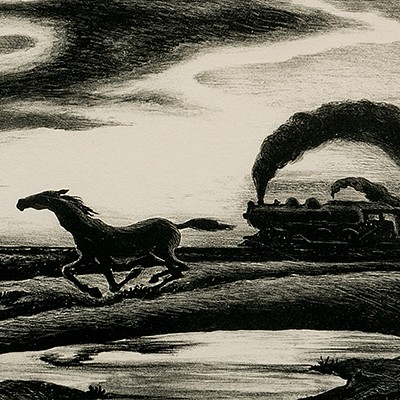Edward Curtis (American, 1868-1952)
Lot 1155
About Seller
Bonhams Skinner
274 Cedar Hill Street
Marlborough, MA 01752
United States
Founded over four decades ago, Bonhams Skinner offers more than 60 auctions annually. Bonhams Skinner auctions reach an international audience and showcase the unique, rare, and beautiful in dozens of categories, including the fine and decorative arts, jewelry, modern design, musical instruments, sc...Read more
Categories
About Auction
Catalog Only
By Bonhams Skinner
Jan 11, 2021 - Jan 21, 2021
Set Reminder
2021-01-11 12:00:00
2021-01-21 19:00:00
America/New_York
Bidsquare
Bidsquare : Fine Prints & Photographs
https://www.bidsquare.com/auctions/skinner/fine-prints-photographs-6279
This auction features American and European works spanning from old masters to contemporary Bonhams Skinner bidsquare@bonhamsskinner.com
This auction features American and European works spanning from old masters to contemporary Bonhams Skinner bidsquare@bonhamsskinner.com
- Lot Description
Edward Curtis (American, 1868-1952)
Zahadolzha-Navaho, c. 1904, from The North American Indian, v. I, p. 140. Identified, dated, titled, and copyright in the lower margin. Copper printing plate and photogravure on Japanese tissue, image sizes approximately 7 1/4 x 5 3/8 in. (18.4 x 13.7 cm), individually framed.
Condition: Good.
Provenance: Edward S. Curtis, Curtis Gravures Company, New York, New York, 1906-1909; Edward S. Curtis, J.P. Morgan and J.P. Morgan Jr., The North American Indian, Inc., New York, New York, 1909-1923; J.P. Morgan Jr., The North American Indian, Inc., New York, New York, 1923-1935; Charles E. Lauriat Company, Boston, Massachusetts, 1935-1972; Cerro Gordo Associates, Santa Fe, New Mexico, 1972-1973; The North American Indian, Inc., Massachusetts and Delaware, 1973-1976; Classic Gravure Corporation, California, 1976-1982; ZAK Partnership (Zerbe-Anderson-Kern), California, 1982-1985; Kenneth Zerbe and Steven Kern, 1985-2018; to the current owner.
N.B. Of the thousands of vintage photogravures from The North American Indian, only a single photogravure plate was produced for each image, making these plates one of the rarest offerings on the Curtis market.
Intended to be a five year project, The North American Indian became a thirty year endeavor as Edward Curtis visited over eighty tribes west of the Mississippi, from the border of Mexico to northern Alaska. This monumental undertaking was made possible by the initial backing of J. Pierpont Morgan with a loan of $75,000 that was quickly spent as the project extended year after year, resulting in less than half of the 500 projected sets being printed. However, because of Curtis' dedication to his vision, each North American Indian set contained twenty volumes of images and text with over 1,500 volume-size photogravures and over 700 large-portfolio photogravures.
Taking over 40,000 photographs for his publication, The North American Indian, Curtis captured what he believed was a 'vanishing race' in the face of forced assimilation and allotment under the United States' Federal Indian Policy. What was aimed to be a comprehensive and permanent record of North American tribes evolved into a blend of documentary and staged photography which formed the foundational, archetypal image of "Native American" still pervasive today. Curtis' hybrid of 19th century ethnographic and fine art photography produced some of the only extant visual records of early 20th century Native Americans and their culture.Condition
Any condition statement is given as a courtesy to a client, is only an opinion and should not be treated as a statement of fact. Skinner Inc. shall have no responsibility for any error or omission. The absence of a condition statement does not imply that the lot is in perfect condition or completely free from wear and tear, imperfections or the effects of aging. - Shipping Info
-
Please visit http://www.skinnerinc.com/services/payment-and-shipping/ for information regarding the collection of items purchased at auction.
-
- Buyer's Premium



 EUR
EUR CAD
CAD AUD
AUD GBP
GBP MXN
MXN HKD
HKD CNY
CNY MYR
MYR SEK
SEK SGD
SGD CHF
CHF THB
THB













